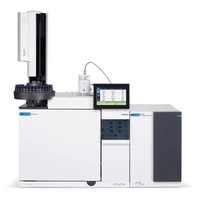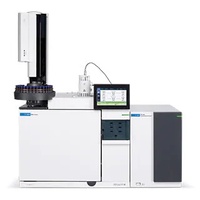The JAS AED is the only commercially available atomic emission detector (AED) for gas chromatographie. It lets you detect virtually all elements within any volatized compound (except helium, the carrier gas) at picogram-level sensitivities, with excellent selectivities. The JAS AED transports sophisticated research capabilities into a reliable, cost effective instrument that is easy to use and maintain - ideal both routine QA/QC and research laboratories.
The JAS AED uses atomic emission spectroscopy to detect elements in compounds eluting from a gas chromatograph. A helium plasma fragments all compounds, with the excited atoms producing characteristic emission lines of light. A lens focuses the light onto the entrance slit of the spectrometer. A rotating grating varies the elemental light spectrum covered by the fixed-position photodiode array (PDA). The PDA can measure from one to several elements simultaneously. The JAS AED can detect any number of elements per sample by automatically changing the light spectrum wavelength range focused on the PDA and subsequently making a second (or third or more) injection of the sample.
Application Areas
The AED is a versatile instrument which can be used for a large number of applications in different industries like:
- petrochemical industry (e.g. sulfur in fuel, SimDis)
- environmental analysis (e.g. organotin- or organomercury compounds, pesticide screening)
- military (e.g. chemical warfare agents)
- high-purity gases (trace analysis)
- semiconductor industry
- automotive industry
Features
- elementspecific detection of more than 26 elements
- equimolar response
- low detection limits
- qualification and quantification
- suitable for routine analysis and research
- operating up to 450 °C
- multi-element detection in one GC run
- multi-element SimDis
- element screening prior to MS analysis
- rapid searching for target compounds
- compoundindependent calibration

?unique=c95e238)
?unique=c95e238)
?unique=c95e238)
?unique=c95e238)
%20?unique=c95e238)
